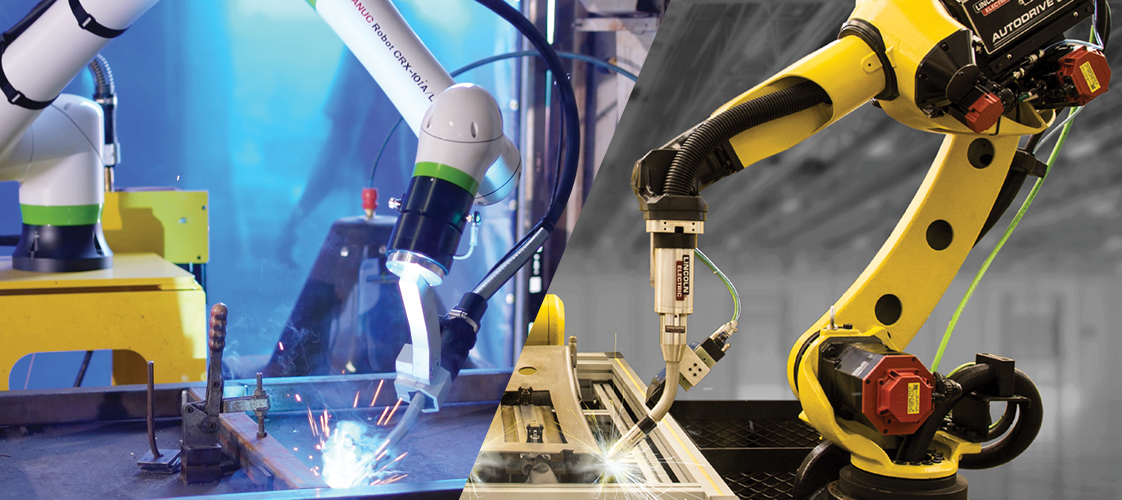
Cobots Versus Robots: Which One Do You Need for Your Automated 3D Inspection System?
Stepping into the world of automation and robotics can be both exciting and daunting. If you’re new to automation or have never implemented a robotic system into your plant, it’s only natural to have many questions. Don’t worry—MAS is here to help you navigate these uncharted waters.
In this guide, we’ll dive into the pros and cons of using industrial robots and cobots in automated 3D scanning applications and factors to consider when selecting between the two. By the end, you should have a much clearer understanding of which option best fits your needs and requirements. Let’s jump in!
3D SCANNING WITH INDUSTRIAL ROBOTS
Manufacturers across various industries are increasingly embracing 3D scanning technology because of its efficiency compared to manual metrology methods.
Traditional industrial robots are known for their incredible speed, power and accuracy. Traditional robots are great for handling heavy parts because they have higher payloads—up to hundreds of kilograms. However, it’s important to keep in mind that 3D scanning is not a high-speed application. Because the robot has to move slowly when collecting 3D data, speed shouldn’t necessarily be a determining factor unless other actions in the cell require higher speeds.
Of course, with great power comes greater responsibility. Due to their strength and speed, industrial robots require additional safety precautions, such as dedicated workspaces and safety measures like guarding and area sensors.
They may also be more complex and expensive to set up than cobots.
COBOT 3D SCANNING
Cobots, or collaborative robots, are specifically designed for applications that demand close collaboration between human workers and robots, so safety barriers are not required.
Beyond safety, cobots offer other advantages in 3D scanning applications.
First, cobot 3D scanners take up less space because they don’t require the safety fencing or guarding as industrial robots do, making them more adaptable to potential plant layout changes. They’re also more intuitive and easier to program than traditional robots, which makes them easier to integrate into existing processes. And if those benefits weren’t enough, cobots are also incredibly mobile—just attach them to a rolling stand and move them from workspace to workspace as needed.
One downside of cobots is that they cannot match the speed and payload capacity of their traditional industrial robot counterparts. With a cobot, you can generally only operate up to speeds reaching around 250 millimeters per second, which can be limiting for certain applications. Cobots can carry up to 25 kg of payload which is enough for most 3D scanners but may not be sufficient for additional tooling or picking and placing large parts.
Despite these limits, cobots can still be worthwhile investments for businesses that need to save time, space, and money—especially those who are adding automated inspection systems for the first time.
HOW TO SELECT THE MOST EFFICIENT OPTION FOR YOUR FACILITY
Selecting the right robotic solution for your facility can be difficult because you need to perform a comprehensive application evaluation to determine speed, precision, and cost requirements.
When you’re performing this evaluation, there are some key questions you should answer:
- How many components are you generally producing in a day?
Traditional industrial robots might be the better choice if your operation demands high-volume production. They are built for speed and can handle large orders more efficiently than their cobot counterparts.
- Does your application require close collaboration between the robot and human workers?
Cobots excel in environments where they work alongside humans. A cobot is the best option if your facility requires a robot that interacts safely with your team.
- Do you need a more intuitive system or something that requires less training?
Cobots largely have a lighter learning curve and offer more user-friendly interfaces, making employee training less time-consuming. If ease of use is your priority, a cobot is likely your best bet.
- What types of components will the robot be lifting?
Consider the weight and variety of components your robot will handle. If you’re dealing with heavy or uniform components, traditional industrial robots can lift higher payloads and may be better suited for your needs. If you create more custom or lightweight components, a cobot could be the better choice.
- Do you have limited space or don’t have the bandwidth to redesign your facility?
Cobots tend to be more compact and mobile, making them better for facilities with limited space.
- Is flexibility important to you?
While both cobots and traditional robots offer some degree of flexibility, cobots generally provide better mobility and can be easily reprogrammed for different tasks. A cobot is likely the most suitable option if you need a versatile solution that can be quickly retaught for different part types.
- Are you working with pick-and-place applications that require lifting heavy parts?
An industrial robot equipped with a 3D scanner will be a more efficient solution for heavy-duty pick-and-place tasks or repetitive processes.
FIND YOUR SOLUTION WITH HELP FROM MAS
MAS is a leading provider of robotic 3D scanning solutions, offering innovative, customized products like the Cobot QC, a collaborative robot equipped with a 3D scanning end-of-arm tool that can quickly and flexibly perform quality control for virtually any part.
If you’re new to the world of automation and robotic 3D scanning, please reach out today to schedule a discovery meeting. We’re happy to answer any general questions you have about robotic 3D scanning, discuss our customizable solutions, or connect you to integrators.
